The last of its kind: Arado Ar 68, the Luftwaffe's final biplane fighter aircraft
By the mid-1930s it was clear to the experts that in the medium term the future of military aviation would be found in the development of monoplanes. In many areas, the approach of the metal-covered and aerodynamically slim monoplane had already been realised. In one central role for the military, however, biplanes were used almost exclusively: in air combat, their high manoeuvrability was considered decisive and thus the biplane fighter indispensable.
The Arado Ar 68
The crews of the Ar 68 had to learn how wrong this assessment could be in grim lessons during the Spanish Civil War. But before I get to that, I would like to outline the interesting development and operational history of the "last Luftwaffe biplane" with a few facts.
With the Ar 65, Arado produced the first fighter aircraft of the Luftwaffe, which was " uncovered" in 1935 in breach of the Treaty of Versailles. Still conceived under secrecy in 1931, the type was considered obsolete at that time and was to be replaced by a modern type, which was expected to have a higher speed. Arado was joined in the tender by Heinkel, which was able to offer a promising design in the form of the He-51.
Arado's answer was the Ar 68, an aerodynamically optimised and robust fighter whose top speed equalled that of the He-51, while its manoeuvrability even eclipsed that of the competing model.
However, the Luftwaffe leadership reacted coolly to Arado's offer, because the decision for the He-51 as the new standard fighter had already been made in the background. Arado, however, did not want to admit defeat so easily, because with this prestigious order both a lot of capital and reputation were at stake.
Arado benefited from the fact that the development of the He-51 was not without complications. Several fatal crashes overshadowed the testing and introduction of the aircraft to the troops, and it soon became clear that the He-51 would not be the great success that had been hoped for as a fighter aircraft.
When Arado was able to win over the influential personality Ernst Udet as an ambitious advocate for a late comparison flight, the course of events took a favourable direction for the Ar 68: Udet himself had sat in the cockpit of an Ar 68 and, thanks to his flying skills, had been able to exhaust the performance spectrum and thus demonstrate it to advantage. De Luftwaffe now actually decided to have the Ar 68 go into series production in parallel with the He-51 and to introduce it as a fighter.
The first examples were delivered to the Luftwaffe from 1936. By 1938, 514 of the two versions E and F were to be produced; even with these production figures, the Ar 68 had beaten its competitor He-51 by a long way.
Both aircraft types offered the young Luftwaffe its first operational experience, and as early as 1937 this biplane duet was supplemented by the pioneering Bf 109 fighter monoplane. Even though this marked the end of the great era of biplanes, the Ar 68 remained in Luftwaffe use. As an advanced trainer - a role that was not written on its bones due to its "sharp" flight characteristics - and later as a makeshift night fighter, the model remained in service in dwindling numbers until 1945.
From 1937, the year after its introduction, all three fighters were to be tested under the conditions of a very real war. The Spanish Civil War was used by Nazi Germany and Fascist Italy as well as by the Soviet Union to test their latest war material. The ranks of the "Condor Legion" included Ar 68s and He-51s as well as early Bf 109s.
It quickly became clear that the biplane had played its part as a fighter; the Ar 68 had little to offer against modern monoplanes, especially the Il-16s often flown by the Republican side. Rising casualty figures led to the type being used increasingly as an infantry support aircraft; the dream of superior manoeuvrability was over.
My model shows one of those Ar 68Es used in the Spanish Civil War, an improved version equipped with the 640 hp Junkers Jumo 210. The aircraft was stationed in La Senia in north-eastern Spain in 1937 as part of the J/88 fighter group.
About the model
The kit from Roden offers a solid and easy way to build an Ar 68. The base of the plastic parts is pleasantly accurate and does not skimp on details in the crucial places. The cockpit interior, for example, is constructed with high detail density as a half "model within a model". For refinement I have actually only included Eduard harnesses here; however, the kit would also have included an etched parts fret with harnesses to be painted yourself.
As often observed with Roden, there is a certain amount of preparation and cleaning to be done with the parts. But a well-considered approach is always a good thing anyway, especially with a braced biplane!
Speaking of typical Roden: I would advise against using the decals. If they could be put on the model in one piece at all, they would definitely not look good. I tried it with one of the black "roundels": this one does not silver in the actual sense, but radiates such an unhealthy shine and did not want to touch the gentle curves of the test model at all, that I was all the more relieved to have found suitable decal replacements in my spare parts box.
The bracing was done with profiled, flat wire from the manufacturer R&B. I can only recommend this material! The first step in the technique is to drill holes in the upper and lower surfaces. At the bottom only one hole has to be drilled, here one end of the wire is anchored with a drop of CA glue. The upper surface is drilled through completely. The other end of the wire is then passed through and put under tension by hand until the CA drop that has also been placed here has completely set.
A consequence of this technique is the final act: the happily glued and now also most remarkable stable structure must now be sanded and painted again on the upper and possibly also on the lower wings. I used dry brushes, acrylic paints and layers of sprayed clear varnish to create the wooden propeller.
For this current year, I had planned to focus on biplanes. I can say that my experience with Roden's beautiful Ar 68 has further encouraged me in this intention; I am really very pleased to be able to put this characterful and appealing aircraft type in my showcase now!
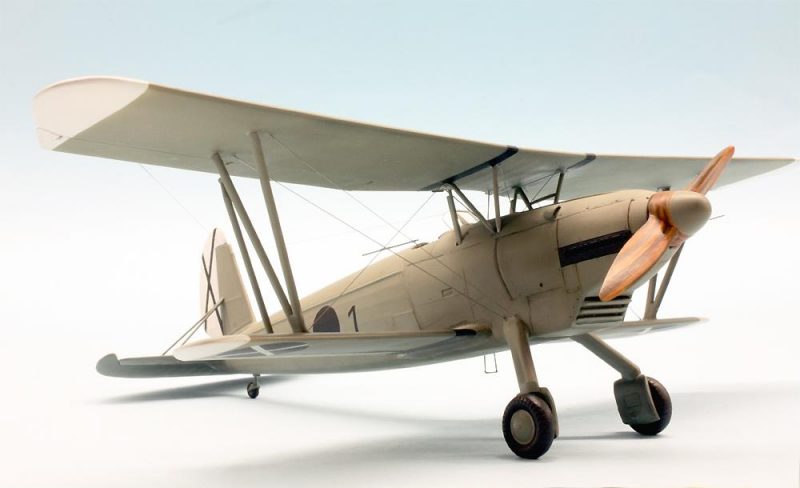

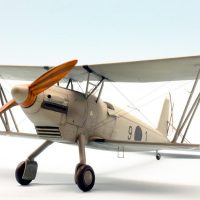
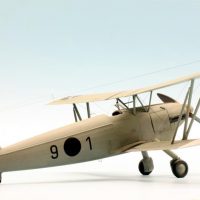
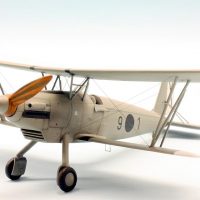
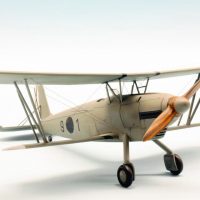
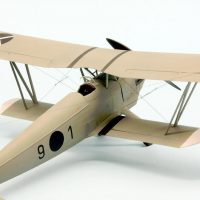
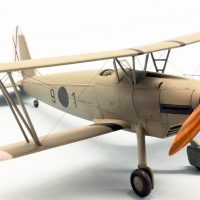


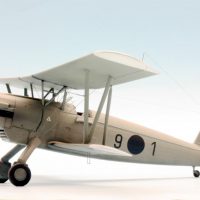
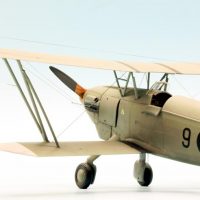
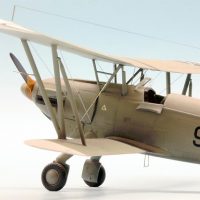
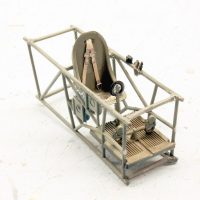
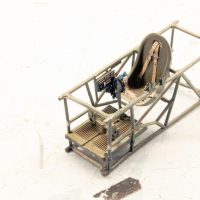
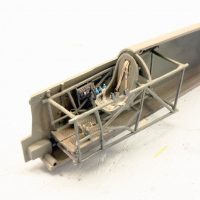
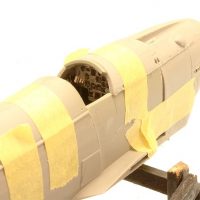
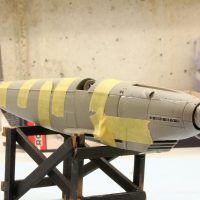
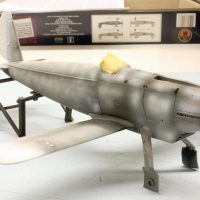
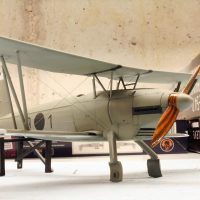
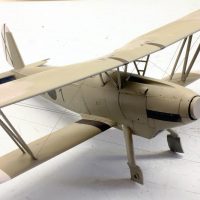
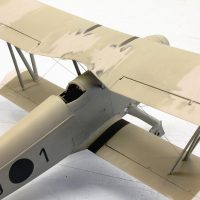
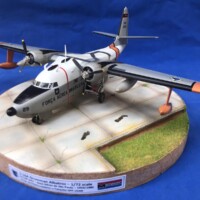
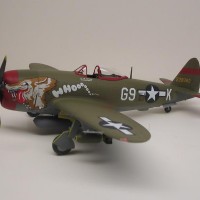
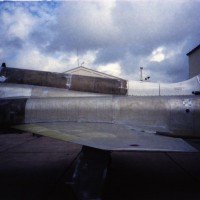

Looks great this trainer! @rosachsenhofer
Can't imagine they were actually used in combat, opposition must have been near inexistant.
Another excellent of your models, Roland, on such an important plane!
The Roden kit was not the easiest kit to build, but, as usual, you did a wonderful job.
Your presentation was excellent, too, I really enjoyed reading it.
Congratulations!
An outstanding build, Roland.
You created a very realistic build of this great bi-plane.
I really like what you have done here Roland. I built this kit also, and it definitely is a good one.
Beautiful result.
"Liked"
Very nice. Your skills are excellent and show patience.
That looks real good. I am not familiar with R&B, but i do have SBS generic flat PE wire.
I will try your drill-through technique on a future project.
Thanks, also for the tip with SBS; I will try that out!
Beautiful model, nice write-up, what more can we want? Definitely liked.
Thank you all for these highly motivating and kind responses, thank you for your interest!
Roland, I really like your work.
Very nicely done! I don't build too many biplanes, but this one is enticing me to add to the collection.
The simple markings and monochromatic color scheme really showcase the pretty lines of this bird. Excellent work.
I would like to thank you all for your interest and your motivating and very kind words!